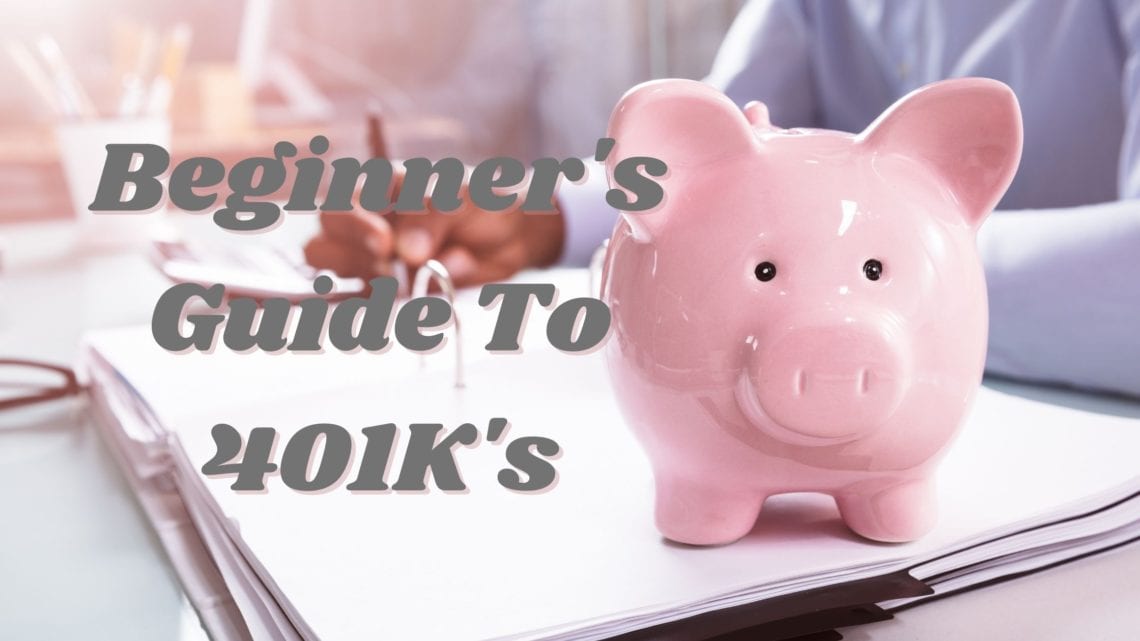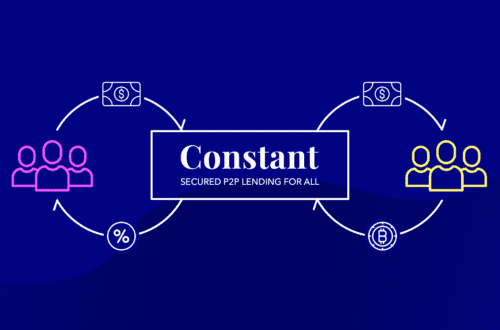
The Beginner’s Guide To A 401K
As an Amazon Associate I earn from qualifying purchases. We may earn money or products from other companies mentioned in this post at no cost to you!
Reading Time: 7 minutesAs the title suggests, this is beginner’s guide to understanding a 401K. I felt the need to create this post because I know so many who don’t take advantage of this easy way to save for retirement, something I’ve been guilty of, myself.
I’ve helped handfuls of other people with their 401K’s and this seems to be a norm. Besides saying “You could/should sign up for this”, there isn’t much, if any, guidance offered. No one says “This is what it means if you DON’T take this”.
This is for those who may be new to the “adult world”, or for those that don’t feel like they have a good understanding of their 401K and retirement benefits. This is only focusing on 401K’s, as discussing all retirement options would make this post way too long! And, being a beginner’s guide, I don’t want people to feel overwhelmed. My hope is that this post will provide awareness and clarity around this one key retirement vehicle.
But, first things first, and I want this to be very clear up front: The following should not be construed as investing advice. Speak to a financial professional for specific financial advice. I do not give tax or legal advice. These are just opinions based on my experience and not any guarantees to make you rich. See my disclosure policy.
My 401K Journey
I know it’s hard when you’re young to be concerned about saving for retirement. You just started your career, right, and now you need to prepare for when you leave it? It’s a little crazy, I get that. I remember my own lack of care when I first started my career. I was more stoked that I would be able to take a vacation and still get paid! But, not paying attention to the rest of my benefits- namely, retirement- is one of my biggest financial regrets.
If your workplace is like mine was, there was very little direction given about retirement accounts. When I started my job, they told me the benefits I was eligible for, including retirement benefits, but there wasn’t much guidance beyond that. No one really ever sat me down and walked me through the “why” I should have a 401K, and the benefits I’d be giving up by not doing it. Not to mention I had no guidance in how I should be invested in it. I was shown the investment options within the 401K, but what exactly they signified wasn’t explained.
What was even worse, when I did finally pick a certain investment strategy, it was months before I realized that they hadn’t processed my paperwork properly and I’d been invested in a fund that was basically a glorified CD! I simply had no idea what I was looking at or what I was doing with 401K.
So, here are some questions you might have if you’re starting in your new job and they’ve told you that you get a 401K.
What is a 401K?
A 401K is, in very simple terms, is a savings account for retirement that you can’t touch until you retire*. You put money in, you can invest it, and it will be there for you when you retire, presumably at 59 1/2. This is not a pension. This is money you put in, and it’s all yours.
401K’s are typically used as a “pre-tax” account. This means that the money you put in from your paycheck was not taxed. You will only get taxed on this money when you pull it out in retirement, whenever that may be. Your current tax bill is lower because you chose to contribute to your 401K.
Employers typically have certain mutual funds or other stocks available to you in your 401K. You can invest in these with the idea that this will grow your money. You could choose to keep it in cash, but that wouldn’t be wise.
*Technically, you can pull money out of your 401K, but expect to lose at least a third of the balance. Because you’re taking money out before retirement age, you pay a 10% penalty, plus all the tax you didn’t already pay on that money, due all at once.
What’s “the match”?
This is the best part of having a 401k if you’re lucky enough to work at a place with a match. It’s essentially “free” money!
“The match” is when your employer also contributes a certain amount to your 401K, based on your own contributions. If they say they’ll match half up to the first 6%, that means that if you contribute 6%, your employer will add an additional 3% to your account. If you only contributed 3%, they’d contribute 1.5%.
So, if you’re making sure that you get the highest match, instead of just 6% of your salary going into your 401K, it’s actually receiving 9%! Sounds pretty good, right?
Using the example of a $40,000 salary, you’re contributing 6% ($92), and the company matching half, your employer is adding $46 to your retirement per paycheck. So, in total, there is $138 going into your 401K per paycheck!
Sadly, I know plenty of people that are guilty of not taking advantage of this benefit. Don’t be one of them!
In fact, it’s been shown that those that make less than $40,000 per year, an incredible 42% do not take their full match! And those under 30 are twice as likely to not take advantage of this benefit.
Just because that extra money doesn’t go in your pocket now does not mean you should be turning down an extra 3% of your paycheck. That’s just… not smart.
To put this a different way, if you don’t take your full 3% match, that’s $1,200 a year that your company is willing to give you that you’re not taking. If you never get another raise for 40 years, that’s $48,000 that you said “no” to. If you had invested that 3% every paycheck in your retirement, you’re literally giving up hundreds of thousands of dollars because you’re missing out on the investment gains and compounding. Sounds like a lot to me.
What’s my contribution?
Also known as your savings rate, your contribution is how much you are willing to set aside each paycheck to go into your retirement account. Your contribution amount can be whatever you want it to be! It could be 1%, 3%, 6%, whatever you decide. The higher, the better!
There is guidance out there that you should be saving 10% of your paycheck for retirement. You may also hear 15%. I’ll just repeat: the higher, the better. It’s up to you.
If you’re young and single, contribute a higher amount. I’d also say that if you’re starting later, you should definitely contribute a higher amount. This is a beginner’s guide so you can start with baby steps. 🙂
Also, keep in mind also how much YOU need to contribute in order to get your employer to give you the maximum match.
So let’s talk about what it means to contribute, and we’ll use 6% as an example. If you’re earning $40,000 annually and get paid bi-weekly (so 26 times per year), your gross paycheck is $1,538 (I’m rounding). If you’re setting aside 6% in your 401K, that’s $92 per paycheck.
Don’t forget that this contribution can also lower your tax liability if you’re investing in a traditional 401K. Using the example above, your taxes would be based on the $1,538 less the $92. Since your paycheck is “after tax” money, you’re not giving up $92, it’s probably more like $70. Not bad, really.
How much can I contribute each year?
You may not have actually known that there is a limit to how much you can save in your 401K each year, but there is. The limits change every year. You can contribute up to 75% of your paycheck or up to the contribution limits, whichever is less.
For 2021, you’re allowed to contribute up to $19,500 (check irs.gov for current limits). You’re also allowed “catch up” contributions if you’re over 50, currently at $6,500.
If you over-contribute, you have to take that money back out and get taxed on it at tax time.
What do I do with the money I contribute?
You have to remember to invest your money once it’s in your account!
There are instances in which people thought that simply contributing to their retirement accounts would ensure that it was earning interest. What they didn’t realize is that they had to tell that money what to do once it was in the account. Otherwise, it will just sit in cash, and would actually lose its value over time!
All the different investing options out there will be a topic for another post, but I’ll touch on mutual funds briefly because they’re almost exclusively what you’ll see offered in a 401K.
Mutual funds are a single fund that you can invest in, but those mutual funds own pieces of multiple companies. So, when you invest in a mutual fund, you’re actually investing in a variety of different companies. Again, the idea is that your money will grow by investing in these.
How to evaluate how many or which mutual funds to invest in will also be a topic for a different post. You could also read this beginner’s guide to investing.
What’s a Roth 401K?
Your employer may not even offer this, but you should ask them if they do. I didn’t know I had this option for years because, again, we got zero guidance.
A Roth 401K is like a Roth IRA: contributions are post-tax, and investment gains are not taxed. This means that the money you’ve made from investing won’t be taxed when you withdraw it in retirement!
The difference between the Roth IRA and the Roth 401k is that a Roth 401K has the same contribution limits as a 401K while the Roth IRA limits are much, much lower.
Why would you want to contribute to a Roth 401K? Roth accounts are attractive because your withdrawals are tax-free. The not attractive part: contributions are after you have already paid tax on that money, so you don’t have the advtange of reduced tax now.
You don’t have to use the Roth option, but it is something to think about it. You could consult a financial advisor, but it’s not necessary. They would lay out the pros and cons, but you could probably just decide on your own when you get more comfortable with investments and create a retirement strategy.
What if I’m not being offered a 401K, I’m being offered something called a 403B?
And I said I was going to only focus on 401K’s… This is a good question, and it might be one some of you need to ask. The reason I’m mentioning it is because a 403B functions the same as a 401K. Why it has a different name is because it behaves differently for your employer. You’ll typically see 403B’s offered at tax-exempt or non-profit institutions like schools or hospitals.
Like the 401K, the 403B may also have a Roth option. Just ask if you’re unsure and are interested in using that option.
See this article from HerMoney (a Jean Chatzky company) to get a brief overview of these accounts.
Closing Thoughts
Contributing to a 401K is a great way to get started on your retirement. Even if you don’t get a match, you should still be taking advantage of the automatic withdrawls from your paycheck. And, when you have your investment strategy in place, you could be earning on the money you still contribute.
I hope you found my beginner’s guide to 401K’s helpful. If you have any questions beyond what I’ve addressed here, contact me or leave a comment below!
RELATED
See best practices for your 401K
Check out this post if you’re a beginner investor
See how to maximize one of your other employee benefits, the HSA
IF YOU WANT TO SEE MORE…
Consider subscribing to my e-mail list. You can always unsubscribe, I won’t spam you!
Follow me on Facebook, Instagram, or Twitter.
Save this post on Pinterest by using the share buttons, and follow me, too!
If you want to start a blogging business, check out this FREE course!
If you want to make money from a blog, check out this program that got me started making my own money blogging!






60 Comments
Christina Siwik
Very informative. Good information for everyone.
Ashley
Thank you!
Tiffany
I wish someone had explained this to me when I started working! Such important info
Ashley
Same here! Thank you for reading.
Beth Shields
Great information and so helpful for those starting and in the midst of it. Thanks for sharing the information.
Ashley
Thank you!
Alice
Very helpful information. I didn’t have an opportunity to save for retirement via a 401k until six years ago. I’m 62 and have been semiretired for a month. I wish I had planned better but I was not expecting to end up in divorce after 22 years. Time to teach my young adult kids this stuff so they could start now.
Megan
That was helpful! There are so many terms when it comes to retirement accounts, it’s nice to have it written in understandable words!
Ashley
I’m glad it was helpful, that’s what I was going for! Thank you for reading.
Kristin
The in’s and outs of retirement funds confuse a lot of people (myself included somewhat). Very helpful info to have. We always had 403b’s at our jobs.
Ashley
I’m in the financial service industry and I STILL learn all the time. For lay people, I hope this will help give some clarity or pointers. You don’t know what you don’t know!
Sydney Delong
This is so helpful! There’s so many options for saving for retirement, it can be overwhelming!
Ashley
Being an “expert” and working in the financial service industry, I still learn! I just hope I can pass on some info so others are farther ahead than I was when I started out.
Lisa Manderino
Great Advice! The earlier you start the better!
Ashley
Definitely!
Debbie
Such helpful info!! Don’t leave employer match money on the table. It’s easier to save when you don’t see it. I remember the benefits. I’ve been self-employed now for many years tho!!
Ashley
I think it can be harder when you’re self-employed! I feel it requires extra discipline.
Ali Huseman
Thank you! This was helpful!
Ashley
You’re welcome!
Lori
Great advice. It’s a great thing to start early.
Ashley
Yes, wish I had started earlier.
Sandra Whitmore
I am retired so I am at the receiving end of this post!
Ashley
I’m sure you have wisdom on the subject, as well!
Elaina
Great information, it all gets a bit confusing when filing out all the paperwork.
Ashley
I remember well!
Adrienne
This can really be a confusing topic. Thanks for breaking it down and making it easier to understand.
Ashley
I hope it’s helpful!
Bonnie
We don’t have 401ks in Canada but this is a helpful guide!
Ashley
I don’t usually think about the readers being in other countries, good to know! Thanks for reading.
Linda Egeler
This should be required reading for all high school and college graduates about to start out on a career! I was able to retire early due to my regualr contributions to my 403b and IRAs: so important to get started when you’re young if you can.
Ashley
Thank you! I try to write about the things I get asked a lot about. Good for you for being able to retire early!
Alysss
Great information, I definitely think this is something yonger people forget to learn about but it’s something that needs to be done and understood.
Ashley
Yep! I’ve been in that boat, and I’ve met many adults who have/still are, too!
Lisa
This is so informative. I know how confused I was when I first entered the workforce and started my first 401K…even today, I can get confused. Thanks for posting.
Ashley
This is basically all the things I wish I found out after starting my retirement, and wish I would’ve known up front! I hope it was helpful to you.
Suz
Thank goodness for 401ks and everything else. As a retired person, I encourage all to save as much $$, in whatever way you can…
Ashley
Thank you for the wise words of experience!
Chelsea
Good info. We have a 403B and I’ve been wondering if if they have a Roth version available. I’ve been thinking I’d rather a Roth IRA (or Roth 401K).
Ashley
Work places aren’t good about saying if they have Roth options, you basically have to know to ask the question! The Roth 403B or Roth 401K work the same as a Roth IRA, but your contribution ceiling is much higher than a regular Roth IRA. The advantage of a Roth IRA outside of your employer is that you get to pick your own investments.
Suzan | It's My Sustainable Life
Great breakdown of what can often be confusing information!
Ashley
Thank you!
Sandra Barrett
Important information for everyone starting their working career.
Ashley
I was trying to make it easy. Thanks for reading!
April Key
So helpful for young adults as a guide to start building their retirement funds! Great post!
Ashley
Thank you for reading!
Melissa Jones
Great info! I have a 401K and there is so much more to understand!
Magan
GREAT article! I used to work at a mutual funds investment company when I was in college (nothing too major–I was an admin assistant!), but it taught me so much. So many people never quite understand what all this financial lingo means, and you did an excellent of explaining it all.
Ashley
Thank you! Just trying to provide clarity on something that I actually get asked about a lot. May seem super basic to some, but others still need the guidance. Thank you for reading!
Cynthia Mailhot
This topic makes my brain hurt but thank you for breaking it down for me.
Ashley
I tried to make it easy! Thanks for reading!
Cindy Moore
Great info! My husband and I are both independent contractors so no longer have a 401K.
Maggie | leavemetodream.com
Such important information, presented perfectly for neophytes. I wish I had had this when I was first enrolled in a 401K, it would have made much more sense!
Ashley
Same here! Thanks for reading.
Barbara
Great info! This is very informative to someone who has not been exposed to these opportunities to plan fo their future financially.
Ashley
Thank you!
Matthew Green
Such a good read. I always here that maximising your 401K is a good idea so it’s great to get more detail.
zortilonrel
Wow that was odd. I just wrote an really long comment but after I clicked submit my comment didn’t appear. Grrrr… well I’m not writing all that over again. Regardless, just wanted to say excellent blog!
BearMoney Dan
The matching really is just free money, and free money that is worth a multiple when you retire. Of course my employer has a program with no matching that also resitrcts your investments so not all such plans are created equally!
Adam Wilson
This is a great introduction to 401 accounts. I hope you will have a deep dive on ROTH options, contribution limits and tax implications.
Steve @ The Frugal Expat
This a great beginners guide to 401ks. There are so many people that do not take advantage of the match or even the pre-tax part of this retirement vehicle. I hope that more people take advantage, but I know I once was foolish and didn’t take advantage of a 403B, but I have did take advantage of the free money in a 401k match.